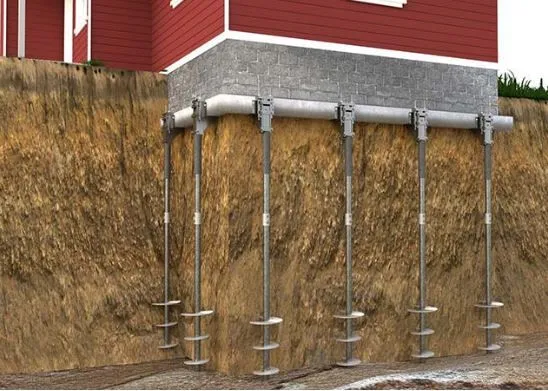The first helical screw pile was invented in the 1830s by a blind Irish marine construction engineer named Alexander Mitchell. His design proved to be a major improvement over traditional straight pile designs so Mitchell and his son promptly patented the cast iron screw pile. In 1840 the first screw piles were installed to support the Maplin Sands lighthouse at the mouth of the Thames River. This innovative design caught on and made its way across the pond quickly and before long most of the lighthouses in the mid-Atlantic region were being built on helical pile foundations. There were more lighthouses built on helical pile foundations in the Chesapeake Bay than anywhere else in the world. A total of Forty-two helical screw-pile lighthouses were built on the Chesapeake Bay between 1850 and 1900.
The helical screw pile technology didn’t stay on the east coast. Over the next few years, helical screw pile lighthouses could also be found in the Great Lakes Region and the Gulf of Mexico.
The foundation of a typical screw-pile lighthouse consisted of one central pile installed in the center and then flanked by another six or eight piles around the perimeter. This design increased the anchoring properties and the bearing power of the helical screw piles. These early helical screw piles were often installed by using large torque bars and the power of men, horses, or oxen. Alexander Mitchell’s helical screw pile design is just as effective today as it was in the late 18th century and continues to be installed around the world.
What are helical piles used for?
Helical piles are shaft driven tubes that are used to stabilize structures by anchoring the load to the surrounding ground. Helical piles are screwed deeply into the earth, section by section if necessary. They are screwed into the ground until it’s proven that the area can properly hold the required bearing capacity of the structure.
Helical piles can be used to create new foundations, to underpin weakening foundations, and to better stabilize existing foundations.
Other popular names for helical piles:
- Screw Anchors
- Screw Piles
- Helical Piers
- Helical Anchors
- Screw Anchors
- Screw Cylinder Anchors
- Helical Foundations
When to use helical piles?
Helical piles are a perfect foundation anchor solution when soil conditions aren’t suitable for the weight of a structure. When soil is soft or oversaturated, it will settle and pack down over time. This can cause the entire structure to move out of alignment, which can be dangerous.
Whether you refer to them as screw piles, helical piers or screw anchors; helical piles are a relatively quick, economical foundational solution that provide stability and strength to foundations. They especially come in handy when there is structural damage to a foundation.
Give us a call today to set up a free inspection. 503-719-7548.



0 Comments